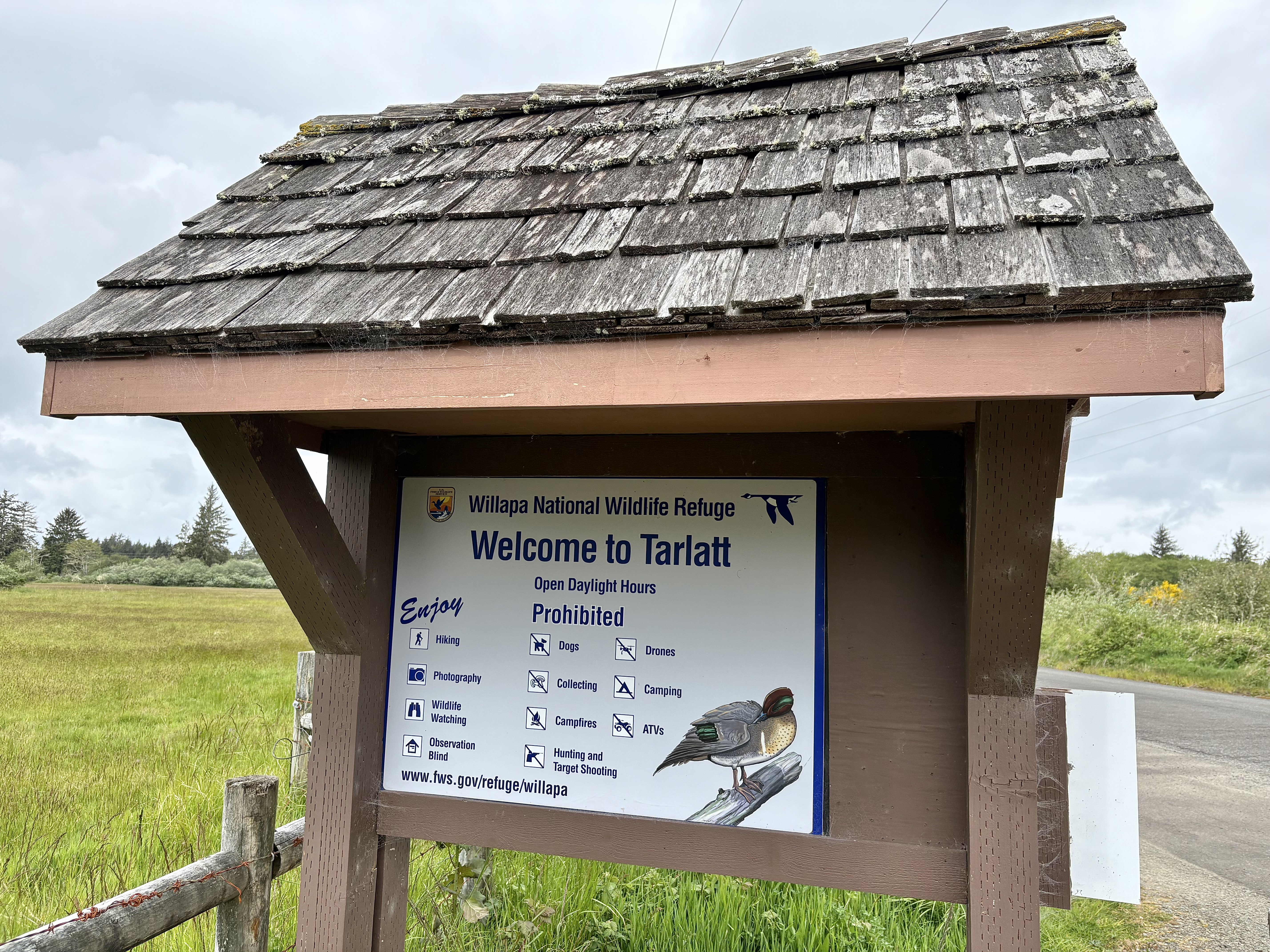Northwest Nature Log Malheur provides a ‘life bird’ before breakfast
Published 7:58 am Tuesday, February 9, 2016

- D. Gordon E. Robertson photo A bobolink rests on a thistle.
If you read the news at all, you will have read about the civil disobedience occurring at Malheur National Wildlife Refuge in southeast Oregon over the past several weeks.
Trending
The following is a “birdier” article than I usually write for our paper, but I want to share this incredible place, and provide a look at what a treasure it is.
Malheur NWR is a birder’s heaven. It is located roughly 35 miles south of Burns-Hines, Oregon and encompasses 187,000 acres of perfect bird habitat, including 120,000 acres of wetlands on the Pacific Flyway. There are also upland and riparian habitats which are vital to many other species of birds, as well as to the mammals that live there. If you’re really good, you can rack up the 320 species of birds that are listed for the refuge in a week or two. There are also 58 mammals, including numerous herds of prong-horn antelope.
I have been fortunate to travel and bird in some very special, far-away places in the world, Ecuador and Costa Rica among them. But I realize that one of the best places of all is closer to home: Malheur. It is, and always will be, very dear to my heart.
Trending
Shortly after 7 a.m. on a May morning a year or two ago, I began a day of birding at Malheur NWR. I had left the Field Station, tucked between North and South Coyote Buttes, planning to bird my way down to the tiny town of French Glen, about 36 miles farther south. Vast, open ranch and prairie land stretched green to both horizons, broken only by steep rock ridges, where an occasional golden eagle nest can be found.
Fast-moving pickups sped by me as I pulled to the shoulder countless times to see white- faced ibis, tundra swans glistening in the early sunlight, countless duck species and yellow -headed blackbirds in almost every lush, flooded field. Although the sky was blue, the air temperature still held a chill. Vees of geese tootled over and I could hear the faint soft yodeling of sandhill cranes. Yellow-headed blackbirds ‘creaked’ on every fencepost, and the western meadowlarks were warbling their hearts out. I was in bird heaven.
One of my goals for the day was to get to “P Ranch,” an old homestead, near French Glen. Word was out that there were bobolinks at P Ranch. This is a bird of the Great Basin whose northwestern-most range touches the edge of Malheur NWR. I had yet to see a bobolink, and was hoping to add it to my list on this trip.
I was just wishing that I had taken a closer look at the bobolink pictures in my National Geo ID book, when a blackbird-size bird flew from fence to field not far ahead of me. The bird was a natty black, with a flashy tan-white patch on the back on his head and nape. He obligingly stopped not too far into the short grass field. He was a gorgeous breeding-plumage male with bright white back and wing bars. Bobolink, no mistake about it. And I hadn’t even had breakfast yet! It was going to be a fine birding trip.
(EDITOR’S NOTE: This was a “life bird” for Staples, which Mother Nature Network defines as “a species that a birder has seen and identified in the wild for the very first time in their life. It can be any bird species at all that the birder sees for the first time, or some birders have a more specific list they’re working on with species that are rare or difficult to spot in the wild.”)
After enjoying the bobolink, I headed for French Glen, arriving in time to share their very generous ranch-style breakfast with other birders. We truly wonked out. Non-birders would be yawning in boredom but we were having a ball. We all shared information on where the birds were, and from there I left to investigate some other parts of the Refuge.
At Diamond Craters, a series of volcanic craters spread over several hundred acres, a great horned owl with her chick sat motionless on the edge of a crater across from the viewpoint and stared back. A coot, the plainest, dullest black bird ever, herded her yellow and black striped chicks across a pond. Each chick’s head was covered with wild red fuzz. Each looked like a tiny explosion.
On the Blitzen River, which flows near French Glen, a black tern made patient, endless flights up and down a ½ mile of water, patrolling for insects. Not really black, but a stunning graphite gray, he was a study in grace and focus.
At Buena Vista Pond, a vast, grassy marsh raucous with bird song, a pair of sandhill cranes tended their two apricot-colored chicks, which are called “colts.”
In a flooded field along one of the countless access roads, at least 2,000 phalaropes, red-necked and Wilson’s, hunted for a meal. These are dainty shorebirds, a bit bigger than a sandpiper. Each bird turns in a tight circle in the shallow water, thus stirring up the mud, and the insects and crustaceans burrowing there. It was delightful to look out across this vast raft of spinning birds.
At the Narrows, a spot on the highway just past the lakes, a burrowing owl enjoyed the day just outside his adopted burrow. He gazed back, turning his head to a perfect 90 degree angle, in order to see me better.
And finally, at the Malheur Refuge office area, a brilliant female hooded warbler, bright yellow with a black hood, hopped through the mowed grass, enchanting even hard-core birders.
My hope is that these incredible places, and the birds and animals living in them, always have a secure place in our world. It’s up to us.









